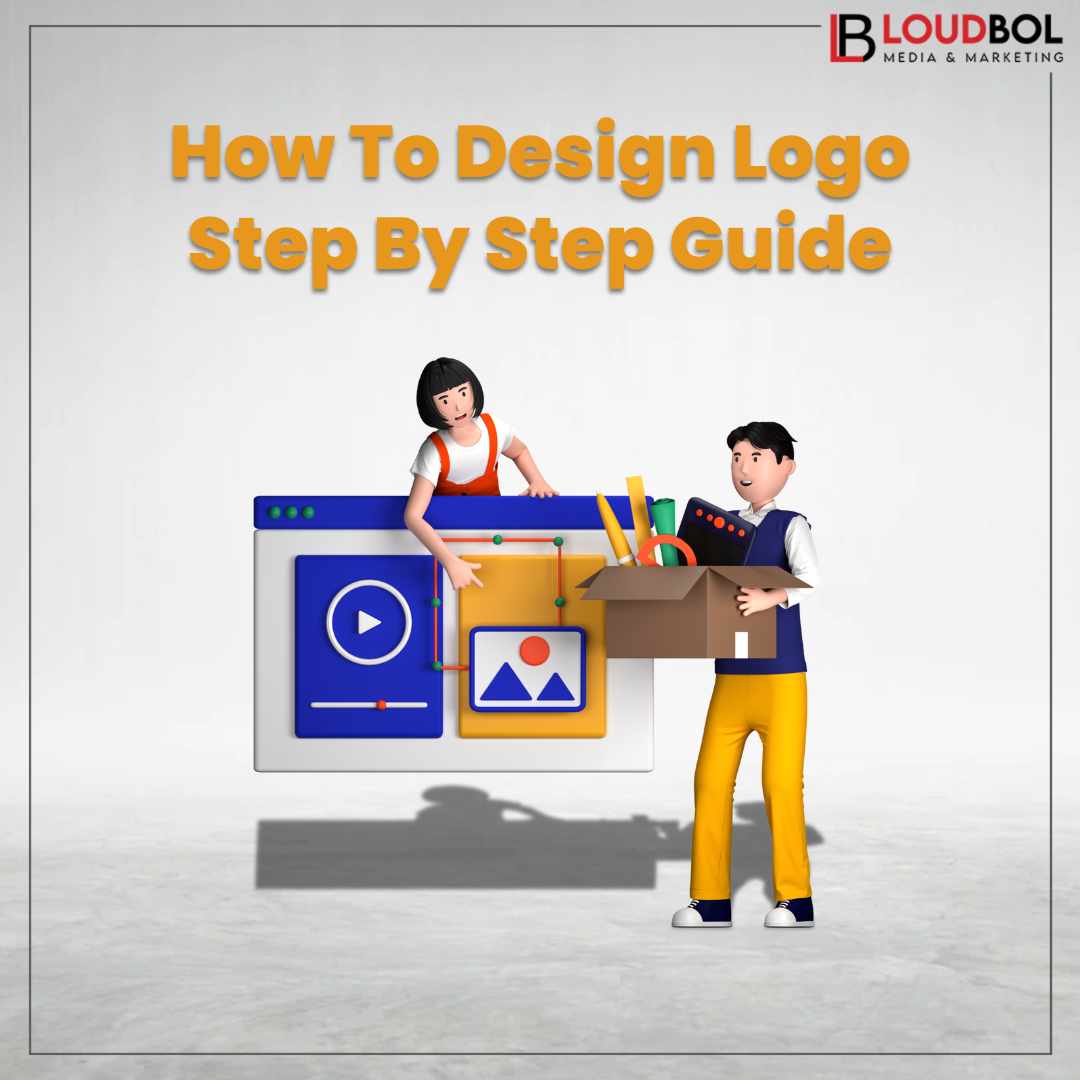A logo is more than just a pretty picture; it’s the visual embodiment of your brand. It’s the first impression you make on potential customers, and it can leave a lasting impact. Designing an effective logo requires a thoughtful and strategic approach. In this comprehensive guide, we’ll walk you through the step-by-step process of creating a logo representing your brand.
Also, if you’re looking to design the logo for your brand, LoudBol digital marketing agency in Navi Mumbai can help.

Step 1: Understand Your Brand Identity
Before you start sketching, it’s crucial to have a clear understanding of your brand.
Define Your Brand: What does your business stand for? What are your values, mission, and vision?
Identify Your Target Audience: Who are you trying to reach with your logo? Understanding your audience will help you tailor your design accordingly.
Develop a Brand Story: What is the narrative behind your brand? A compelling story can inspire your logo design.
Step 2: Conduct Logo Research
Analyzing existing logos can provide valuable insights and inspiration.
Industry Analysis: Study logos of competitors and successful brands in your industry.
Logo Trends: Stay updated on current logo design trends to ensure your logo is modern and relevant.
Iconic Logos: Learn from timeless classics and understand why they are effective.
Step 3: Brainstorm and Sketch
Let your creativity flow!
Mind Mapping: Generate ideas by brainstorming words, images, and concepts related to your brand.
Sketching: Put your ideas on paper. Don’t worry about perfection at this stage; focus on quantity.
Explore Different Concepts: Experiment with various shapes, symbols, typography, and color palettes.
Step 4: Choose the Right Logo Type
There are several types of logos to consider:

Wordmark: Based solely on typography, often used for tech or consulting firms.
Letter mark: Uses initials or letters, suitable for established brands.
Pictogram: A symbol representing an object or concept, ideal for businesses with a clear visual identity.
Abstract Logo: A non-representational design, often used for modern or creative brands.
Combination Mark: A combination of a wordmark and a symbol, offering versatility.
Step 5: Select Colors and Typography
Color psychology plays a significant role in logo design.
Color Meaning: Research the psychological impact of different colors and choose ones that align with your brand’s personality.
Color Harmony: Create visually appealing color combinations.
Typography: Select fonts that reflect your brand’s tone and style. Consider readability and scalability.
Step 6: Create Multiple Logo Variations
Flexibility is key.
Different Sizes: Design your logo to look good in various sizes, from small icons to large billboards.
Black and White Versions: Ensure your logo is recognizable without color.
Horizontal and Vertical Formats: Consider how your logo will look in different orientations.
Step 7: Get Feedback
Seek input from others.
Target Audience: Ask potential customers for their opinions on your logo designs.
Colleagues and Friends: Gather feedback from people with different perspectives.
Design Professionals: Consider hiring a professional designer for expert input.
Step 8: Refine and Finalize
Make necessary adjustments based on feedback.
Iterate: Continuously improve your logo design until you’re satisfied.
Digital Format: Create high-resolution digital files in various formats (e.g., AI, EPS, PNG, JPG).
Logo Guidelines: Develop a style guide to ensure consistent logo usage.
Step 9: Test Your Logo
Put your logo to the test.
Different Backgrounds: Check how your logo looks in various colors and images.
Print and Digital Media: Test your logo on different platforms and materials.
Memorability: Assess how easy it is for people to remember your logo.

Step 10: Protect Your Logo
Safeguard your intellectual property.
Trademark Registration: Consider trademarking your logo to prevent unauthorized use.
Copyright: Understand copyright laws to protect your logo’s design.
Conclusion
Designing a successful logo is an investment in your brand’s future. By following these steps and dedicating time and effort to the process, you can create a logo that resonates with your target audience and leaves a lasting impression. Remember, a great logo is timeless, versatile, and memorable.




Average Rating